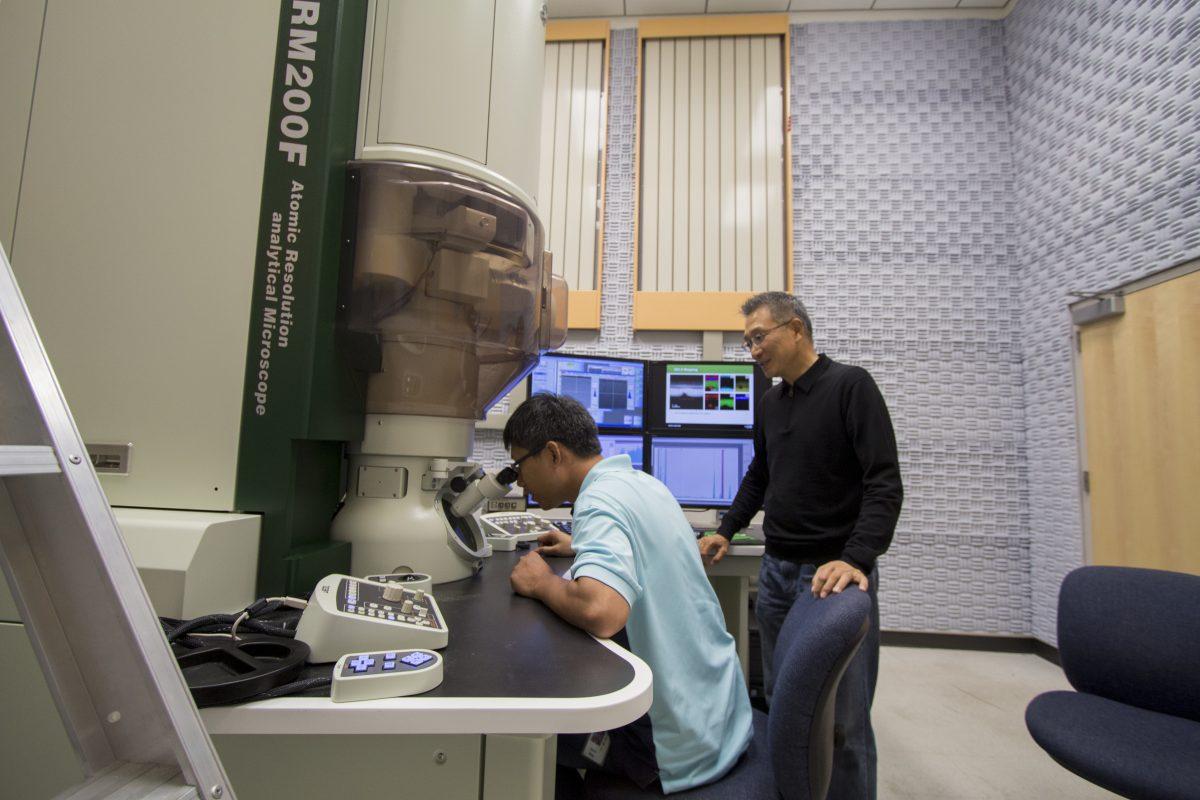The world is one step closer to implementing alternate technology that can improve the battery life of computing devices such as phones, calculators and laptops due to recent advances made possible by UTD faculty.
Moon Kim, a distinguished professor of materials science and engineering partnered with the University of California at Berkeley and the University of Stanford for the project. They published their work on Oct. 7, detailing a breakthrough that involved making transistors, the unseen hardware components of the circuit boards in electrical devices, smaller than ever before.
“We were able to push the whole size down to the smallest ever made, much smaller than the smallest silicon transistors,” Kim said. “To have this kind of effort published … one year is a really good time … you have to do a lot of groundwork.”
With this new technology, phones or laptops don’t need to be charged as much. The battery life on these devices can last longer than before.
The multi-university collaborative research process came from the need to find alternatives to silicon transistors.
“We’ve been making silicon transistors smaller and smaller, so we can put more in the same unit area. … We are approaching a real physical limit with silicon. So, we have been studying alternate technology to replace silicon,” he said.
Kim’s research group is currently studying materials known as transition metal dihalcogenides that could be used in place of silicon. One of these, molybdenum disulfide, is the subject of their recently published breakthrough.
The research holds implications for daily computing.
“It allows for computing to be more efficient,” Kim said. “Since you are using molybdenum disulfide, the electron current leakage will be much less.”
The opportunity arose through interactions with peers from UC Berkeley and Stanford when Kim was publishing and discussing some research he had conducted in the past.
“Nowadays, these high impact papers have many authors and require cooperation. This is why we need inter-university as well as intra-university collaboration to be successful,” he said. “Even though we are working with bigger schools like UC Berkeley and Stanford … it is key to take advantage of (what is available in) your department or area.”
UTD’s role in the inter-university research was the final step. Kim’s group was in charge of actually testing the device under a powerful microscope to see if it would work as predicted. Qingxiao Wang, a material sciences and engineering doctoral student, is a key member of Kim’s research team.
“So in Berkeley, they have the idea to build the device, but they have a problem with seeing (whether it will work or not)… So they come to us and ask for help to see the material and confirm (their ideas),” Wang said. “So I prepare a sample, make a cut across the device, and we look at it through the TEM to observe (the properties).”
The TEM is a special transmission electron microscope located on campus in the NSERL building. It is an advanced piece of technology that lets researchers examine compounds with great clarity at the atomic level.
The principal investigators from UC Berkeley and Stanford needed the expertise of Kim and his team, who had to make use of the machine as well as interpret its results, to understand how well the device was functioning.
Ultimately, the three universities were successful with molybdenum disulfide after about a year of collaboration between Kim and the other principal investigators. But, it will be a long time before the research can be applied in the marketplace.
“The scientific proof of concept is one thing, but manufacturing involves a lot of engineering problems and economics and cost-cutting,” Kim said. “Even the silicon technology we are enjoying today, it took almost half a century to get this far.”











